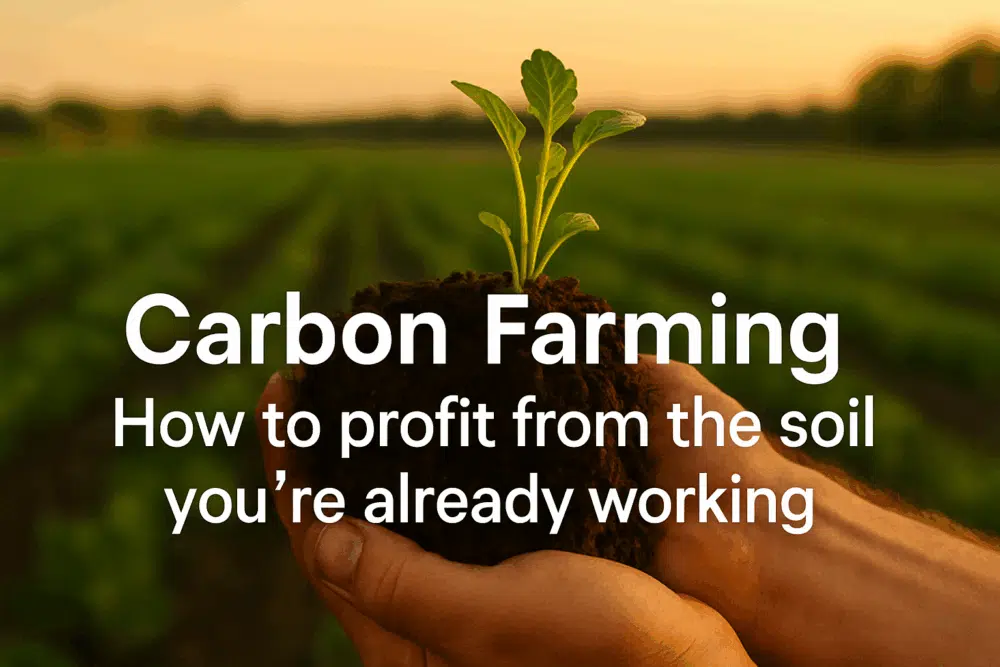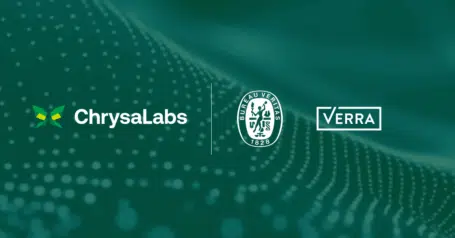Why Carbon Farming Is More Than a Buzzword
Carbon farming is quickly becoming a strategic lever in sustainable agriculture. And for good reason: it’s no longer just about sequestering CO2, it’s about monetizing it. As governments tighten climate goals and companies chase Scope 3 reductions, the demand for credible agricultural carbon credits is surging.
For ag input companies, this isn’t just an environmental play. It’s a business opportunity to diversify revenue, reinforce leadership, and deliver real value to farmers. But let’s be clear: not all carbon credits are created equal. If you want to compete in this evolving market, your strategy needs to be sharp.
What Makes a Nature-based Carbon Credit Actually Sell?
Resilience – Carbon That Holds Up Over Time
Buyers don’t just want carbon off the books, they want assurance that projects deliver impact that lasts. In soil carbon and other nature-based solutions, that means more than permanence: it’s about resilience.
Practices like no-till farming or cover cropping not only capture carbon for years, they also improve soil health, biodiversity, and water retention. These co-benefits make projects stronger in the face of droughts or shocks, creating the kind of durability that buyers are willing to pay more for.
Quality – Verified or It Didn’t Happen
Standards are the currency of trust. Credits verified by Verra, Gold Standard, or CAR command stronger prices because they signal integrity. These frameworks ensure that every ton of CO2 sequestered is real, additional, and measurable.
Traceability – The Clearer the Audit Trail, the Stronger the Trust
Blockchain. Satellite imaging. Digital MRV platforms. These aren’t buzzwords, they’re the infrastructure of credible carbon markets. Buyers want to see the full journey of a credit, from field to registry. The more transparent the trail, the more confident the buyer.
Traceability also plays a critical role in avoiding double counting, a common concern in voluntary and compliance markets. By ensuring each credit is uniquely tracked and verified, project developers protect both integrity and market confidence.
Voluntary vs Compliance Markets: Where to Start
Voluntary carbon markets (VCMs) are the launchpad for most ag players. They’re flexible, less regulated, and full of corporate buyers eager to offset emissions. Programs from Bayer and Corteva, along with project developers like Indigo Ag, make it easier for farmers and ag input companies to enter the space.
Compliance markets, on the other hand, offer price stability and predictable demand but with higher regulatory barriers. Regions like Australia (ACCUs) and the EU’s new Carbon Removal Certification Framework (CRCF) are setting the tone for agriculture-based credits. A smart move? Start in the VCM, prove your value, then scale into emerging compliance frameworks.
The Hidden Science That Drives Carbon Credit Value
Carbon farming isn’t just about good intentions. It’s about ground-truth data. And that’s where principles like additionality, accuracy, and consistency come into play. Credits only count if they represent carbon that wouldn’t have been sequestered anyway.
Agtech tools like ChrysaLabs’ soil probe are flipping the script. They offer in-field data that meets verification standards and brings credibility to every credit issued. When you quantify carbon like a scientist, you can sell it like a strategist.
Carbon Farming Trends That Will Define the Next Decade
- Value Differentiation: Buyers will pay more for credits with strong traceability and co-benefits (like biodiversity, soil health and farmers community).
- Product bundling: Input companies are embedding carbon credits into their product offers, turning agronomic benefits into marketable assets.
- Tech-led verification: From AI to satellites, precision measurement is reshaping how we track and trade carbon.
Stop Treating Soil Like Dirt. Start Valuing It.
Carbon farming is more than a climate solution. It’s a business model. And the sooner you integrate it into your strategy, the sooner you capture the value. From stronger farmer relationships to diversified revenue streams, the upside is real and growing.
The soil is ready. The market is ready. Are you? Get in touch to explore your carbon strategy and unlock new value from the ground up.



